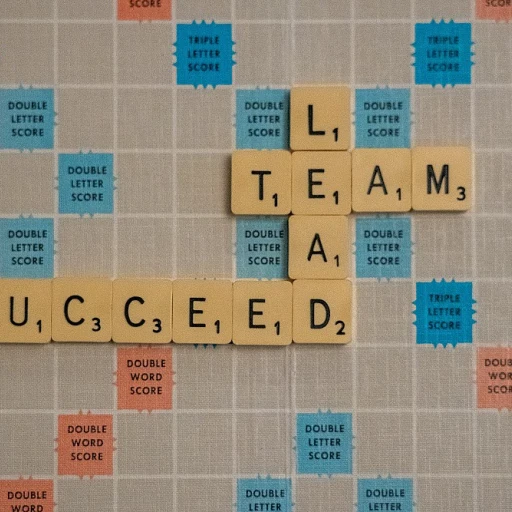Introduction to the ADDIE Model
The Role of the ADDIE Model in Continuous Learning
The ADDIE Model serves as a guiding framework in the landscape of continuous learning, enhancing learning outcomes across various environments, from school settings to professional training programs. Constructed from five phases—Analysis, Design, Development, Implementation, and Evaluation—the model effectively supports instructional designers in constructing and delivering educational content that meets the unique needs of learners.
The beauty of the ADDIE Model lies in its flexibility. Whether you are designing training sessions in Savannah, Georgia, or creating modules for distant learning in montgomery savannah, its phases offer adaptable strategies. Each phase provides critical steps that contribute to a coherent and well-organized instructional process. It's a well-traveled path taken by many in the instructional design profession, equipping experts like instructional designers with a systematic approach to develop engaging and effective learning experiences.
During the Analysis phase, instructional designers identify the learning goals and objectives. This phase involves gathering details on the learners and their environment, ensuring that the training meets the specific needs of a diverse audience, ranging from middle school students to professionals looking to upskill.
The unit of instructional content crafted during the design phase ensures a tailored fit, enhancing skill acquisition and knowledge retention. This phase emphasizes aligning learning objectives with the instructional strategies to meet target outcomes effectively. The ADDIE Model does not merely support the immediate development of content, but it ensures that the training you embark on will have a lasting impact, much like enhancing skills through cognitive analytic training.
Embracing the ADDIE Model in continuous learning fosters a structured yet flexible educational path. By understanding its importance, anyone involved in instructional design can undeniably improve the quality of their educational materials, from homes for sale training to savannah apartments' management programs, ensuring effective delivery and meaningful learning experiences.
Analyzing Needs in Learning Environments
Understanding the Initial Steps in the ADDIE Model
The ADDIE model is a cornerstone in instructional design, guiding the development of effective training programs. The first step, the analysis phase, is crucial for setting the foundation of any learning environment. This phase involves a detailed examination of the learning needs and objectives, ensuring that the subsequent phases are aligned with the desired outcomes.
In the analysis phase, instructional designers work to identify the specific needs of the learners. This involves gathering data on the current skills and knowledge levels, which can vary widely depending on the context—be it a middle school in Chatham County or a corporate training unit in Savannah, Georgia. The goal is to pinpoint gaps in knowledge and skills that the training aims to address.
Conducting a thorough analysis requires looking at various factors, such as the learners' backgrounds, the learning environment, and the resources available. For instance, if the training is for a fitness center staff, the analysis might focus on customer service skills and knowledge of fitness equipment. In contrast, a training program for a school in Montgomery Savannah might emphasize curriculum development and instructional strategies suitable for school grades.
Details from this phase inform the design phase, where the structure of the learning experience is crafted. It's important to consider practical constraints such as budget, time, and available technology. Whether designing for a jun studio or a more traditional setting, the analysis phase ensures that the learning experience is relevant and targeted.
Ultimately, the analysis phase sets the stage for the entire ADDIE process. By understanding the needs and context of the learners, instructional designers can create more effective and engaging learning experiences. For more insights on enhancing learning through structured analysis, you can explore mastering the art of continuous improvement skills.
Designing Effective Learning Experiences
Crafting an Engaging Curriculum: The Blueprint of Learning
The ADDIE model offers a systematic approach to instructional design, and the third phase, design, plays an essential role. This phase acts as the blueprint where the groundwork laid during the previous analysis phase transforms into well-structured learning experiences. In this instructional phase, designers focus on creating engaging content that aligns with the outlined goals. Consider an educational environment in Savannah, Georgia, where school grades are dependent on tailored curriculum development. Tailoring lessons to meet specific analysis requirements ensures more effective training and support. For instance, details gathered from chatham county’s middle school unit can inform the design, making it resonate more with students' unique needs. This not only enhances their walk score towards achieving academic milestones but also motivates them through instructional design strategies. Designers consider various elements, including:- Content Sequencing: Organizing material logically, which aids in a cohesive learning experience for students at different instructional levels.
- Media Selection: From fitness center videos to interactive jun studio resources, choosing appropriate media is crucial. It ensures the right tools are utilized to foster understanding.
- Detailed Plans: Each training day covers specific topics, progressed with defined instructional strategies. This supports the instructional design goal of effective unit delivery.
Developing Learning Materials
Crafting Learning Materials for Skill Development
In the development phase of the ADDIE model, learning materials are produced to support the instructional design laid out in the previous phases. This stage is pivotal for solidifying the framework into tangible units that can be used within training programs. Instructional designers must focus on creating high-quality resources that address learners' needs, keeping school grades and diverse educational environments in mind, from montgomery savannah to middle school levels.
Development requires a thorough understanding of the instructional content, where drawing from the insights gathered during the analysis phase will guide the creation of effective materials. This might involve crafting detailed lesson plans, designing multimedia content, or developing comprehensive training manuals. Instructional designers should bear in mind factors such as the savannah georgia, where cultural and educational backgrounds might influence the learning process.
The materials developed should cater to various learning preferences. Some learners may benefit from interactive video content, while others might find value in traditional text-based materials. Therefore, offering a range of resources, including unit-based learning modules and dynamic instructional resources, is crucial in catering to diverse needs.
To ensure that these materials are practical and engaging, involving instructors and participants in the development phase can be beneficial. Feedback from those who are part of the learning community, whether from chatham county or beyond, offers practical insights and potential improvements. This collaborative approach helps refine the content quality, ensuring it is both meaningful and actionable when implemented in real-world settings.
Through a comprehensive and adaptive development process, the ADDIE model facilitates the creation of effective and relevant learning materials that enhance learners' experiences and ultimately lead to successful educational outcomes.
Implementing Learning Strategies
Getting Your Learning Strategies in Motion
Implementing learning strategies is a crucial phase of the ADDIE model, where the theoretical blueprint crafted during the design and development phases takes on a tangible form. The skills and knowledge identified during the analysis stage come to life, aiming to fulfill educational objectives effectively. This phase is all about action — taking the plans and ideas and translating them into actual learning experiences. For instructional designers working with training programs in diverse environments such as a corporate setting or the savannahs of Georgia, the implementation of learning strategies requires careful coordination. Whether you're launching a new course in middle schools in Chatham County or onboarding new hires in your company's Savannah office, successful implementation calls for attention to detail and adaptability. Some key elements to consider during this implementation phase include:- Training Delivery Methods: Depending on the unit and scale of the training, different methods such as in-person workshops, e-learning courses, or hybrid models might be utilized. The choice greatly affects the overall learning engagement and effectiveness.
- Resource Management: Implementing learning strategies effectively involves ensuring that all necessary materials and resources are available. This may encompass printed materials, digital content, and even physical spaces like classrooms or training centers.
- Facilitator Preparation: Instructors or facilitators must be well-versed with the training materials and strategies. This involves not just content familiarity but also adeptness in employing instructional techniques suitable for varying school grades or corporate levels.
- Adjustment and Flexibility: While plans are put into motion, it’s important to monitor the execution closely. Occasional tweaks and adjustments based on participant feedback and emerging needs can enhance the learning experience significantly.
Evaluating Learning Outcomes
Assessing the Impact of Learning
The evaluation phase is a pivotal aspect of the ADDIE model, as it involves a rigorous analysis of the learning outcomes to determine the success of the instructional design and the overall training program. This phase addresses several critical questions: Did the learners achieve the desired outcomes? Were the learning resources effective? Did the methodologies employed during the instructional development resonate with the participants? By focusing on these questions, instructional designers can gain comprehensive insights into their programs.
In evaluating learning strategies, a blend of qualitative and quantitative metrics is recommended. This might include pre- and post-assessment results, feedback from learners, and observational data. For example, if a training session on school grades improvement was conducted in a middle school in Chatham County, reviewing the test scores before and after the training could provide quantitative data, while student feedback would offer qualitative insights.
Moreover, evaluation does not stop at merely gathering data; it extends to the interpretation of these details to make informed decisions. For instance, if the evaluation phase reveals that the design phase did not adequately address the needs identified during the analysis phase, instructional designers may need to revisit the training plan. In some cases, this could involve modifying the learning materials or introducing supplementary resources to enhance understanding.
Evaluation also considers external factors such as the training environment. This could range from the physical setup, like the suitability of the savannah training units or the availability of amenities such as a fitness center, to more intangible aspects like the walk score of the area for learner engagement outside formal training hours.
Ultimately, the goal of the evaluation phase under the ADDIE framework is to ensure continuous improvement within learning strategies. It is an ongoing process, similar to continuous iterations in software development or the regular monitoring of pet rent policies in savannah apartments. By keeping a feedback loop open, instructional designers can ensure their training programs remain relevant, effective, and aligned with the learners' evolving needs.












